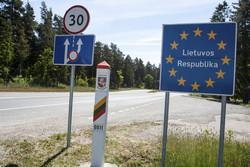In-depth look into the factors affecting EU cohesion
Despite their socioeconomic imbalances and cultural and historical disparities, border regions are building channels of communication for mutual economic and political benefits. The EU-funded EUBORDERREGIONS(opens in new window) (European regions, EU external borders and the immediate neighbours. Analysing regional development options through policies and practices of cross-border co-operation) project looked into how these intensified relations help to achieve regional development objectives within a broader European context. Project work centred on the external border regions of Bulgaria, Estonia, Greece, Spain, Italy, Poland, Romania and Finland, and their dealings with neighbouring countries such as Morocco, Russia, Tunisia and Turkey. To achieve its goals, EUBORDERREGIONS held a series of seminars to interview, consult and involve civil society actors, business organisations, and local and regional government representatives. After mapping the current CBC state of play, the EUBORDERREGIONS team carried out 11 case studies that reveal complex and varied relationships across border regions. Study findings show that border regimes and geopolitical circumstances limit the potential significance of CBC. They also reveal that CBC can help tap into the vast potential of all border regions, and should be seen as a long-term solution rather than a quick fix. Project partners then identified challenges to economic, social and territorial cohesion, and regional development potential in the 11 case study areas. Field research provided an overall picture of regional development conditions at external borders. Greater insight was gained into how communities perceive local and regional development within a broader European context. Researchers also studied ways in which regional development policies were formulated and implemented. This helped to determine whether such policies contribute to regional development and well-being. EUBORDERREGIONS shed light on the ramifications of local and regional development for external border regions. It should give impetus to improved relations between the EU and its outlying neighbours while driving European cohesion.



